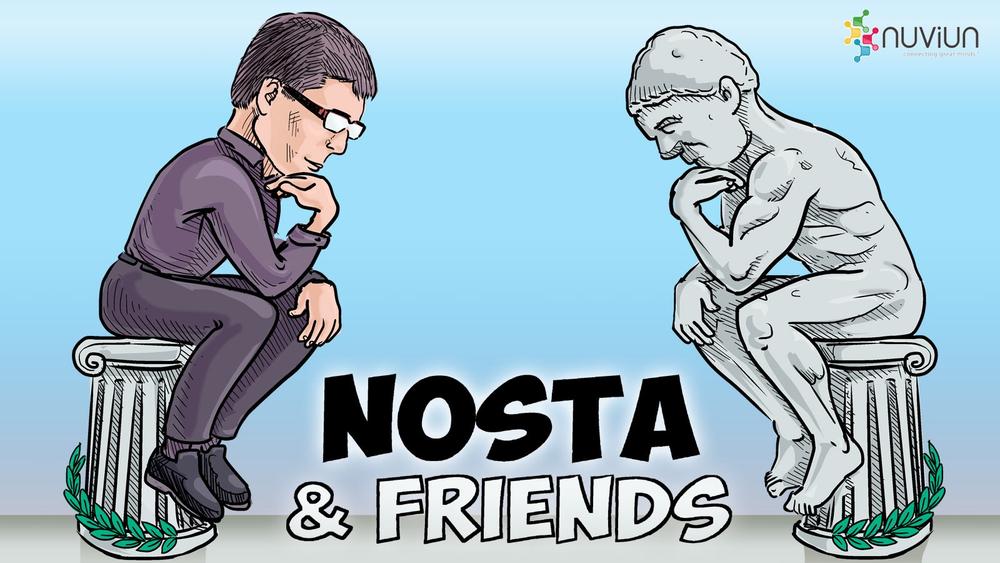In our new Nosta & Friends series, John Nosta welcomes Tom Greene—who offers his unique perspective on customer loyalty as it applies to healthcare.
Think. It’s my favorite verb. It’s what I like to do and it’s also what I like to engage others to do. Nosta & Friends is an opportunity to bring great thinkers together and help foster a dialogue that’s smart, relevant and fun.
Today’s friend is Tom Greene, a healthcare consultant and digital health evangelist. Tom provides a unique perspective on “customer loyalty” and its application to healthcare. He makes some interesting comparisons to other consumer markets and helps advance this important, and sometimes controversial topic.
The Coming Battle in Healthcare Loyalty
By Tom Greene
The United States consumer has been one of the main beneficiaries of major changes in innovation and technology over the last twenty years. Innovation and technology have improved our lives in immeasurable ways.
A transformation has taken shape in the way we bank, shop and plan our daily lives. In the simplest of terms, we have largely removed the “middle-man,” who formerly controlled access to our personal data and the ways in which we used it. This trend is called “disintermediation." This disintermediation trend has nearly killed some of our nation’s largest occupations, like retail bankers, travel and insurance agents.
We also have greater access to our personal data via the web. This new trend is called “data liberation.” Data liberation and disintermediation are game-changers for the consumer. They are also powerful forces in consumer loyalty—both positive and negative.
What about healthcare? Why hasn’t my doctor’s office evolved through the disintermediation and data liberation trends? Why is gaining access to my medical records so difficult?
The reason is that healthcare innovation has traditionally lagged behind other industries, often by several decades. However, some big changes have arrived in the form of the Medicare/Medicaid Electronic Health Record (EHR) Incentive programs. These programs provide financial incentives for hospitals to move medical records to an electronic format. Providers must demonstrate that patients are using the system to receive future incentive payments. This utilization criterion is called “Meaningful Use.”
This has caused doctors and hospitals to migrate to EHR platforms like the swallows of Capistrano. Thus, your doctor now talks to you over a computer terminal during your short fifteen minutes of interaction. By all accounts, short visits take a toll on the doctor-patient relationship. There is less of a dialogue between patient and doctor, studies show, increasing the odds that patients will leave the office frustrated. But this is a move toward data liberation and disintermediation, right?
Not by a long shot.
There is no standard data language in healthcare. We are finally starting to see the adoption of some major data formats like CCD/C-CDA. But, as anyone who's worked with these formats can attest, there is still much to be done to make them a true standard. When it comes to the issue of control, it is imperative to know what is being shared and with whom.
Nowhere is this more important than in healthcare. What makes it complicated is that healthcare delivery requires a small army of different stakeholders. And those stakeholders need varying degrees of access to your health data in order to care for you properly.
In the midst of this confusion, there is another big development. Last year, 64 percent of job offers filled through Merritt Hawkins, one of the nation’s leading physician placement firms, involved hospital employment—compared with only 11 percent in 2004. Today, about 60 percent of family doctors and pediatricians are employees rather than independent practitioners, according to the American Medical Association.
One of the primary drivers of this trend is access to better EHR technology and patient portals. Patient portals allow patients to gain access to certain medical records and to communicate with the practice.
A new PwC healthcare study suggests that there may be a link between a physician’s office use of electronic health records (EHRs) and patients’ loyalty. Many of those current EHR users (67%) say that web systems for emailing physicians, filling prescriptions and making appointments are very influential when it comes to picking a physician. That’s great, but it isn’t exactly data liberation.
So this new technology should lead to greater patient-physician loyalty, right? Not so fast.
Creating (and even defining) customer loyalty in the pharmaceutical and healthcare verticals is challenging. Consumers have more loyalty to fellow human beings than institutions. I’ve been seeing the same dentist for twenty years. And the same doctor for almost fifteen years. Those are personal relationships, to be sure.
But now that my doctor is employed by a big, publicly-traded hospital, it has a new feel. It’s institutional and cold. After all, what is a hospital but a large hotel? Except that all the guests are sick, the beds are hard, the food is awful and the surly staff wakes you up all night long. And, people die there. What’s not to love?
“Living it up at the Hotel California. You can check out any time you like, but you can’t ever leave.”
A recent report published by the market research company Nielsen focused on consumer loyalty. The study of nearly 30,000 people worldwide indicated that 74% of respondents are loyal to supermarkets, retailers and grocery stores where they usually go. The nation’s largest retailers understand customer loyalty. Target and Wal-Mart are charging aggressively into the healthcare space.
In contrast, a recent study at Johns Hopkins found that 23 percent of patients see three or more primary-care physicians in a 24-month period, indicating that patient loyalty is now a bigger issue than ever. Given the loyalty to retailers, will customers choose their Target or Wal-Mart loyalty over their physician loyalty? Maybe.
A lot of this depends on “how” these retailers design their healthcare services and experience. Can retail be a truly transformative platform for healthcare? Can retail do for healthcare what Starbucks did for coffee or what Airbnb did for the hotel business?
Take, for example, the partnership between Walgreens and Theranos. The partnership will introduce lightning-fast, finger stick, CLIA-certified lab services in Walgreens. An effort to transform the community pharmacy into comprehensive care center. Target will team-up with Kaiser-Permanente to bring convenient, high-quality health solutions to Target guests.
So with all this transformation and loyalty in the wind, what can primary care physicians do to retain customers? Research shows that the biggest cause of disloyalty is broken internal processes that damage the customer experience.
The introduction of EHR platforms does not necessarily guarantee a positive customer experience. So far, the only clear winners are the software companies that got paid millions in implementation and licensing fees. In fact, when dealing with customers, no technology at all is better than bad technology.
Smart healthcare systems will take a note out of the banking industry playbook. According to the Bain & Company Annual Survey of customer loyalty in retail banking:
- Mobile banking is more likely to increase a US customer's likelihood of recommending the bank than any other channel interaction.
- Loyal customers buy more banking products, stay longer, cost less to serve and urge others to become customers.
- Banking models with the highest average loyalty scores over the past three years experienced the greatest deposit growth as well.
But just as the banking industry begins to rest on its laurels, it too is challenged from unexpected transformative competitors. Enter PayPal, Square and GlobalPay. These crafty innovators are outflanking the stodgy, old banks—bringing mobile credit card reading technology to the small business owner for about ten bucks, plus a percentage of each transaction. A whole new industry of competition has emerged with a single brick and no mortar.
As the healthcare system transforms to a new model, large healthcare systems will be wise to embrace the philosophy of interoperability. That is, creating a customer experience that allows for a single source to view and share medically reliable records, improve patient communication, quality of care and satisfaction quickly, easily and securely.
These type platforms also allow patients to enter their own data collected from their daily lives. These type platforms bring the average customer experience into the 21st century.
There is no doubt that healthcare systems have made big bets on technology. But so have the nation’s largest retail chains. To win this war, healthcare systems must move quickly and constantly innovate.
The transformation has begun. In order to win the loyalty war, they will have to invest wisely, embrace interoperability and dramatically improve the customer experience.
Log in or register for FREE for full access to ALL site features
As a member of the nuviun community, you can benefit from:
- 24/7 unlimited access to the content library
- Full access to the company and people directories
- Unlimited discussion and commenting privileges
- Your own searchable professional profile







.jpg)


